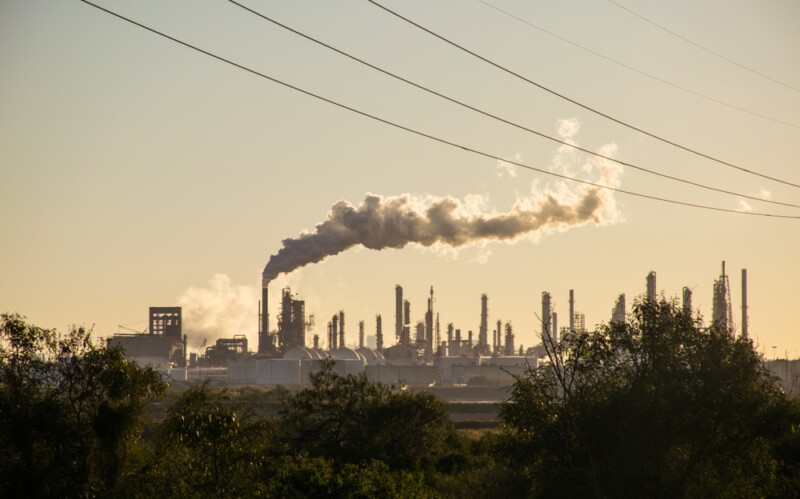The Intergovernmental Panel on Climate Change’s (IPCC) latest climate report, AR6, has declared that human-caused global warming will cause the planet to rise 1.5 degrees Celsius above industrial levels within the next decade – urging the world to take action.
The report states that net-zero emissions by 2050 should be a critical priority, in order to avoid longer and more severe heatwaves, droughts and species extinction.
Renewable energy solutions
In light of the IPCC report, the Clean Energy Council said that renewable energy presents proven opportunities for rapid decarbonisation, and has enormous potential to reduce carbon efficiently and cost-effectively long into the future.
Clean Energy Council Chief Executive, Kane Thornton, said that the report is a confronting warning for Australia to transition away from fossil fuels.
Mr Thornton said the report, “could not be more explicitly about the urgency required to cut carbon emissions, and the clean energy industry is ready to continue doing the heavy lifting”.
“Australia has tremendous potential to produce low-cost electricity from renewables which can power the country and the world, and we must lean into the clean energy transition, not seek to hold back the tide,” Mr Thornton said.
“When the upside of taking action is so good for jobs, the economy and the environment, why would we delay?
“Clean energy not only outperforms fossil fuel-based sources of generation, but it also provides much-needed stimulus to employment and the economy as we continue to find a path out of the pandemic.
“Australians know the impact of climate change all too well, and this report is just the latest to illustrate that we don’t do enough to combat this global issue.
“Nationally, energy policy has been politicised for far too long, and AR6 lays out the consequences of continuing to delay the clean energy transition.
“Australia is in an enviable position to be able to harness the power of clean energy resources, providing a pathway to turning our reputation as a climate laggard around.”
Carbon tax, then trade
While polls suggest a carbon tax is unpalatable to most Australians, putting a price on carbon is considered to be an essential tool in the effort to avoid an even worse climate disaster.
Recent University of Sydney modelling suggests a ‘tax then trade’ scheme of pricing carbon, rather than just a trading scheme, is the most economically efficient.
Associate Professor from the School of Economics, Tiho Ancev, said that an initial, short-lived tax provides a signal to emitters about the adequacy of their investment in abatement technology.
This creates greater overall efficiency and lower permit prices. It is also more politically palatable than a tax-only scheme.
Numerous countries around the world, such as the EU member states, Canada, New Zealand, parts of the US, and now China use this method of emissions reduction.
This has led to significant reduction of carbon emissions in these jurisdictions, especially in the EU, where carbon pricing via a tradable permit scheme has been in operation since 2005.
Mr Ancev said, “COVID-19 pandemic is a small challenge compared to climate change, and if we are going to address it to avoid an even bigger future crises, we can’t go at it without having a carbon price.”
A gas-fired transition
The Australian Petroleum Production and Exploration Association (APPEA) said that new technology and natural gas are part of the solution to reducing emissions.
APPEA Deputy Chief Executive, Damian Dwyer, said global action is needed to reduce emissions in major emission-intensive economies.
“Natural gas has only half the greenhouse gas emissions of coal when used to generate electricity,” Mr Dwyer said.
“By replacing higher-emitting fuels with cleaner natural gas we can substantially reduce emissions.
“Natural gas has a critical role to play in reducing emissions in our energy system. It is the perfect partner to renewable energy. When the sun doesn’t shine or the wind doesn’t blow, we can rely on natural gas to provide stable power for our homes and businesses.
“The Australian Government estimates that our exports of LNG have the potential to lower emissions in LNG-importing countries by around 170 Mt CO2-e by providing an alternative to higher emissions fuels — the equivalent of almost one-third of Australia’s total annual emissions.
“The Australian oil and gas industry has a key role to play in a cleaner energy future, both in Australia and globally.
“The industry is also leading development of climate change technologies like carbon capture and storage (CCS) and hydrogen.
“CCS projects are already removing around 40 million tonnes of CO2-e every year.”
Mr Dwyer said APPEA supports the science of climate change, reinforced by the new IPCC report, and the need to reduce global emissions consistent with the objectives of the Paris Agreement and reaching net zero emissions by 2050.
“For example, our submission to the Department of Industry, Science, Energy and Resource’s consultation on a hydrogen certification scheme, outlines a key-way to fast track a scalable hydrogen industry,” Mr Dwyer said.
“A hydrogen guarantee of origin (hydrogen GO) scheme is an important step towards a cleaner energy future for Australia and the world.
“Hydrogen is an immense opportunity for Australia to fast-track its transition to a lower carbon economy. Natural gas is the pathway to developing a home-grown hydrogen industry.
“Developing a home-grown hydrogen industry also means a bright future for natural gas and the hundreds of thousands of jobs across Australia that depend on our industry.
“Just as government investment in renewables has fast tracked projects, investment in hydrogen will do the same and create thousands of jobs in the process.
“Australia’s LNG export success means the Australian upstream oil and gas industry has the technology, expertise, commercial and trade relationships to make hydrogen exports a reality.
“The development of a hydrogen GO scheme is an important next step in making hydrogen an export growth story for Australia.”
“CCS and hydrogen development are just two examples of the work our industry is doing to reduce emissions.”
The urgency of energy action
Climate and energy program director at the Australia Institute, Richie Merzian, said, “The new IPCC report is a powerful and painful read. It leaves absolutely no doubt that climate change is caused by humans and emissions from burning fossil fuels is the key cause.”
“The latest science confirms what most Australians have felt first-hand. The extreme weather and the devastating fires and floods we’ve seen over the last two years are only going to get worse and they’re going to be more widespread.
“Our response to the last five IPCC reports has been a collective failure and we now know that the world will pass the threshold of 1.5 degrees of global warming in the next two decades. We simply can’t afford to ignore this report.
“In particular, this report sounds the alarm on the concentration of methane – which makes up the majority of natural gas, and which has increased 156 per cent since pre-industrialisation.
“Australia is a wealthy country that can afford to double its short-term climate efforts. At the very least, we should be transitioning our energy system, which remains heavily reliant on fossil fuels.”
To read the AR6 report, click here.













